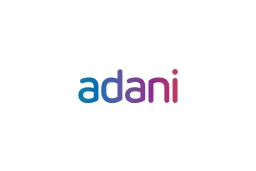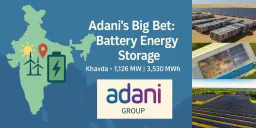India 2024-25 Budget: Key Highlights and Impact on Investments and Savings
The Indian Government's Budget for 2024-25, presented by Finance Minister Nirmala Sitharaman, lays out a comprehensive roadmap aimed at fostering economic growth and addressing key sectors vital for investors and savers. Here’s a detailed overview of the budget's significant highlights and its potential impact on investments and savings.
Global Economic Context and India's Position
The global economy continues to grapple with uncertainties, including elevated asset prices and political disruptions. However, India remains a shining exception with stable economic growth and low inflation. This stability forms the backdrop for a budget designed to sustain growth and enhance investor confidence.
Budget Priorities and Themes
The 2024-25 Budget focuses on nine primary areas:
Agricultural Productivity and Resilience
Employment and Skilling
Inclusive Human Resource Development and Social Justice
Manufacturing and Services
Urban Development
Energy Security
Infrastructure
Innovation, Research & Development
Next Generation Reforms
These priorities underscore a commitment to creating a robust economic environment conducive to investment and savings.
Key Initiatives Impacting Investors and Savers
1. Income Tax Revisions

Income Tax Rates for 2024-25:
Nil for income between ₹0 and 3 lakh
5% for income between ₹3 and 7 lakh
10% for income between ₹7 and 10 lakh
15% for income between ₹10 and 12 lakh
20% for income between ₹12 and 15 lakh
30% for income above ₹15 lakh
These revised tax rates provide significant relief for middle and upper-middle-income groups, enhancing disposable income and savings potential.
2. Taxation and Fiscal Measures
Income Tax Simplification: The budget proposes a comprehensive review of the Income-tax Act, 1961, aiming to simplify the tax code, reduce disputes, and provide greater certainty to taxpayers.
Capital Gains Taxation: Simplified rules for short-term and long-term capital gains, with distinct rates for financial and non-financial assets. Notably, long-term gains on all assets will attract a tax rate of 12.5%, benefiting middle-income investors.
Personal Income Tax Revisions: Increased standard deductions and revised tax slabs for the new tax regime, providing significant relief to salaried individuals and pensioners.
3. Enhancements in Financial Services
Credit Support to MSMEs: Introduction of a credit guarantee scheme for MSMEs to facilitate term loans without collateral. This aims to boost the manufacturing sector and create more job opportunities, indirectly benefiting the broader economy.
MSME Stress Period Support: A new mechanism to ensure continuous credit availability for MSMEs during stress periods, thus safeguarding investments in this crucial sector.
Increased Mudra Loan Limits: Enhancing the Mudra loan limits to ₹20 lakh from ₹10 lakh for successful entrepreneurs, which will stimulate small businesses and entrepreneurship.
4. Infrastructure Development
Significant Capital Expenditure: Allocation of ₹11.11 lakh crore for capital expenditure, representing 3.4% of GDP. This includes substantial investments in road connectivity, flood management, and urban housing, which are expected to have a multiplier effect on the economy.
Private Investment in Infrastructure: Promotion of private sector investments through viability gap funding and enabling policies. This presents opportunities for investors looking to participate in public-private partnerships.
5. Energy and Environmental Initiatives
Renewable Energy Incentives: The launch of the PM Surya Ghar Muft Bijli Yojana to install rooftop solar plants, providing free electricity up to 300 units per month. This initiative encourages investment in green energy and sustainability.
Nuclear and Thermal Energy Projects: Development of advanced nuclear reactors and ultra-supercritical thermal power plants, offering new avenues for investment in the energy sector.
6. Digital and Technological Advancements
Digital Public Infrastructure for Agriculture: Expansion of digital infrastructure in agriculture to cover farmers and their lands, facilitating better access to credit and resources.
Integrated Technology Platform for IBC: Establishing a technology platform to enhance outcomes under the Insolvency and Bankruptcy Code, ensuring more efficient resolution of distressed assets.
Savings and Social Welfare
Enhanced Support for Women and Rural Development: Allocation of over ₹3 lakh crore for schemes benefitting women and girls, and ₹2.66 lakh crore for rural development. These measures aim to enhance social equity and economic participation.
PM Awas Yojana Expansion: An ambitious plan to provide 3 crore additional houses under PM Awas Yojana, which will boost the housing market and related investments.
Conclusion
The 2024-25 Budget of India is a balanced and forward-looking document aimed at fostering growth, stability, and inclusiveness. It provides a conducive environment for investors through simplified tax structures, enhanced support for MSMEs, significant infrastructure investments, and robust digital and energy initiatives. For savers, the budget offers increased deductions, social welfare schemes, and housing initiatives that collectively enhance financial security and growth prospects. Investors and savers alike can look forward to a promising fiscal year with numerous opportunities to grow and secure their wealth.









